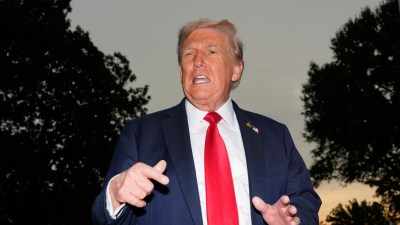$2 a share deal for Bear Stearns takeover sends shockwaves across world
In a shocking deal reached to save Bear Stearns, JPMorgan Chase has agreed to pay a mere $2 a share to buy all of Bear...

In a shocking deal reached to save Bear Stearns, JPMorgan Chase has agreed to pay a mere $2 a share to buy all of Bear, less than one-tenth the firm’s market price on Friday. As part of the watershed deal, JPMorgan and the US Federal Reserve will guarantee the huge trading obligations of the troubled firm, which was driven to the brink of bankruptcy by what amounted to a run on the bank.
The Fed, which hopes to avoid a systemic meltdown in financial markets, has approved a $30 billion credit line to engineer the takeover of Bear Stearns and announced an open-ended lending programme for the biggest investment firms on Wall Street. In a third move aimed at helping banks and thrifts, the Fed has also lowered the rate for borrowing from its so-called discount window by a quarter of a percentage point, to 3.25 per cent.
The moves amounted to a sweeping and apparently unprecedented attempt by the Fed to rescue the US financial markets from what officials feared could be a chain reaction of defaults. In a highly unusual maneuver, Fed officials said they would secure the loan by effectively taking over the huge Bear Stearns portfolio and exercising control over all major decisions in order to minimise the central bank’s own risk. The Fed, working closely with bank regulators and the Treasury Department, raced to complete the deal in the early hours of Monday in order to prevent investors from panicking during the day about the ability of Bear Stearns to make good on billions of dollars in trading commitments.
Despite the sale of Bear, investors fear that others in the industry, like Lehman Brothers, already reeling from losses on mortgage-related investments, could face further blows. The deal for Bear, done at the behest of the Fed and the Treasury Department, punctuates the stunning downfall of one of Wall Street’s biggest and most storied firms. Bear had weathered the vagaries of the markets for 85 years, surviving the Depression and a dozen recessions only to meet its end in the rapidly unfolding credit crisis now afflicting the American economy.
It was unclear just how much risk the Federal Reserve was taking on, especially in the bailout of Bear Stearns. But analysts said it was clear that JPMorgan Chase was getting an extraordinary bargain, buying Bear Stearns at a tiny fraction of its market value just one week ago, and with the Fed shielding it from much of the risk. Fed officials said they would take control of the investment holdings of Bear Stearns in order to maximise their value and minimise disruptions as a result of a cash squeeze. Without providing details, Fed officials insisted that the $30 billion loan was covered by even the most conservative estimates of the Bear Stearns holdings.
Despite the sale of Bear, investors fear that others in the industry, like Lehman Brothers, already reeling from losses on mortgage-related investments, could face further blows. The deal for Bear punctuates the stunning downfall of one of Wall Street’s biggest and most storied firms. Bear had weathered the vagaries of the markets for 85 years, surviving the Depression and a dozen recessions only to meet its end in the rapidly unfolding credit crisis now afflicting the American economy.



- 01
- 02
- 03
- 04
- 05



























